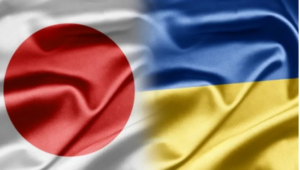
A new poll shows that some 69% of respondents in Ukraine believe their country should seek an early negotiated end to the war with Russia, data obtained by the American Institute for Public Opinion Research Gallup shows.
“In the latest Gallup poll in Ukraine, conducted in early July, 69% of respondents favored an early negotiated end to the war, while 24% support continuing the fight until victory,” the organization’s website says.
The survey also shows that Ukrainians’ hopes of joining NATO and the European Union have faded and support for the US leadership has plummeted, Ukrainians still see the EU, the UK and the US as key players in ending the war. However, most doubt this will happen anytime soon.
“Although the vast majority of Ukrainians now favor a negotiated end to the war as soon as possible, most are skeptical that active fighting will end anytime soon. One in four (25%) believe that active hostilities are likely to end within the next 12 months, although only 5% consider this “very likely.” More than two-thirds (68%) believe that active hostilities are unlikely to end within the next year,” the survey says.
It is noted that Ukrainians’ views on the US as a military ally have changed dramatically since the first months of the war.
“In 2025, 16% of Ukrainians approve of US leadership, while 73% express disapproval, a record high. All the goodwill that Washington accumulated in 2022, when 66% approved of U.S. leadership, has disappeared,” the institute reports.
Despite the sharp disapproval of US leadership, a majority of Ukrainians still believe Washington has a significant role to play in ending the war.
“70% believe that the US should play a ‘significant role’ in peace talks, which is in line with views relative to EU countries (75%) and the UK (71%).” Although some negotiations have recently taken place in Turkey, 55% of Ukrainians support its significant involvement, which is much lower than support for the EU, the UK and the US,” the pollsters inform.
But the perception of Germany has improved significantly this year. “The approval rating for Berlin’s leadership reached a record high of 63%, despite Germany’s more cautious stance in the early months of the war. Russia’s approval rating remains insignificant (1%), and China continues to receive low marks (8%), as it did at the beginning of the war,” the study said.
Ukraine has long expressed a desire to join NATO, which many see as crucial to the country’s long-term security.
“In the first two years of the war, there were high hopes for rapid NATO membership, with large majorities (64% in 2022 and 69% in 2023) expecting Ukraine to be admitted to the Alliance within the next decade. Hopes for early NATO membership fell to 51% last year and continue to decline, reaching 32% in 2025… Meanwhile, the percentage of those who believe Ukraine will never be admitted to NATO rose to 33%, the same percentage as those who expect to join within the next 10 years,” the American Institute for Public Opinion Research reported.
The survey results are based on a sample of 1,000 or more respondents aged 15 and older living in Ukraine. Some territories that are under Russian control and have a population of about 10% were excluded from surveys conducted after 2022 due to lack of access.
As reported, Russia’s conditional peace plan, which among other things includes a significant reduction of Ukraine’s army, refusal of NATO membership and the transfer of Ukrainian-controlled territories under Russian control, is categorically rejected by 76% of Ukrainians, can agree to Russia’s demands – 17%, as evidenced by the results of a survey conducted by the Kyiv International Institute of Sociology during July 23 – August 4, 2025.

Global insured losses from natural catastrophes in the first half of 2025 reached $80 billion, which is almost double the 10-year average, according to the Swiss Re Institute.
According to its website, this already exceeds half of the projected annual figure of $150 billion.
Swiss Re Institute notes that wildfire losses have risen sharply over the past decade as rising temperatures, more frequent droughts and changing rainfall patterns combine with suburban sprawl and a concentration of high-value assets.
For example, he said, wildfires in Los Angeles County, USA, in January resulted in insured losses of about $40 billion in the first half of 2025, while insured losses from severe convective storms (SCS) reached $31 billion.
“By 2015, insured losses related to wildfires accounted for about 1% of all natural catastrophe-related insured losses. Since eight of the 10 most expensive wildfires in recorded history occurred in the last 10 years, the share of insured losses related to wildfires has risen to 7%,” the Swiss Re Institute explained.
Meanwhile, the institute said: although the first half of 2025 saw several devastating thunderstorms with severe hail and tornado outbreaks in the US, total losses caused by SCS fell below both the projected trend of $35 billion and the record-breaking events of 2023 and 2024.
“However, SCS continue to be a major driver of global natural catastrophe insurance losses, with annual volatility highlighting their ongoing threat to property and infrastructures,” Swiss Re Institute said in a statement
As insured losses rise globally, overall economic losses are also rising, with Swiss Re Institute reporting $143 billion in the first half of 2025, up from $130 billion in the same period in 2024.

In July, the National Bank of Ukraine (NBU) increased its sales of foreign currency on the interbank market by $873.6 million, or 30.9%, to $3.69 billion, according to statistics on the regulator’s website.
According to the statistics, the National Bank’s purchases of foreign currency in July fell to $0.83 million from $1.2 million in June, and last week the NBU’s foreign exchange interventions decreased by $171.9 million, or 21.2%, to $639.6 million compared to the previous week.
In July, the official hryvnia to dollar exchange rate strengthened from 41.7788 UAH/$1 to 41.7662 UAH/$1.
In the cash market, the hryvnia exchange rate strengthened by almost 13 kopecks over the month: buying at around 41.48 UAH/$1, selling at 41.58 UAH/$1.
“In July, the dollar to hryvnia exchange rate continued to demonstrate high stability with insignificant intraday volatility that did not turn into trend movements,” said experts from KYT Group, a major participant in the cash foreign exchange market.
They point out that the exchange rate fluctuations do not exceed 0.2%, which indicates an extremely restrained market reaction – especially given the announcement of important macroeconomic signals.
In their opinion, in the short term (one to three weeks), the corridor of 41.40-42.10 UAH/$ will remain in place in the absence of external shocks or surges in demand from importers.
KYT Group analysts expect that in the medium term (up to three months) the exchange rate may gradually shift to 42.30-42.80 UAH/$ in the face of the traditional growth in budget expenditures in the second half of the year, increased imports, or the implementation of the expected September Fed rate cut, which will lead to a correction of the dollar.
In the long term (over six months), experts predict a controlled devaluation trend. According to the baseline scenario, the exchange rate is expected to be in the range of UAH 43.00-44.50/$, provided that the current level of international support, stable reserves, and no unexpected shocks, especially those of a non-economic nature, are maintained.

A private equity fund from Central Asia – Brickstone Private Equity Fund CEIC Ltd (Kazakhstan) – has acquired Ukrainian construction company Watzenrode.
“As of July 15, 2025, I am no longer a shareholder of Watzenrode. This large company, which I founded in 2013, has grown to become a key player in the Ukrainian construction and now renovation market, showing stable growth even in wartime. The new owner, a private equity fund linked to the largest construction group in Central Asia, has multi-billion dollar revenues,” founder Ilyas Ertle said on LinkedIn.
According to YouControl, Brickstone Private Equity Fund CEIC Ltd (Kazakhstan) became the new owner with a 100% stake.
“With the change of management, Watzenrode has effectively become the construction company with the strongest financial backing in Ukraine. This creates an environment that sets Watzenrode up for success and for becoming a central player in the reconstruction of Ukraine,” Ertle wrote.
The team will continue to be led by Oleksandr Gura, Ilyas Ertle remains on the board of directors at the suggestion of the new shareholder.
Watzenrode provides design, construction and engineering services in the roles of contractor, general contractor and technical customer. In particular, the company was a subcontractor for the construction of the confinement of the Chernobyl nuclear power plant, realized together with NEFCO the project of renovation of the water supply system in Borodyanka, was selected as a general contractor for the expansion of the UNBROKEN Ukraine clinic in Bryukhovichi near Lviv at the end of 2024, etc. According to YouControl, Watzenrode LLC’s revenue for 2024 amounted to almost UAH 369.275 million, which is 2.3 times more than in 2023. The company’s net profit grew last year by 29% to UAH 13.8 million.

Within the framework of the forum in Japan between businesses signed memorandums and agreements for almost $1 billion, said Deputy Prime Minister for European and Euro-Atlantic Integration of Ukraine Taras Kachka.
“We have calculated that the total cumulative number of those memorandums, documents signed between businesses reaches almost $1 billion. Dialogue with Japan is systematic, systematic and very meaningful,” Kachka said on the air of the national telethon on Tuesday.
Earlier in the Office of Deputy Prime Minister said that on the margins of the forum Ukraine and Japan signed 29 important agreements, in particular agreements on the implementation of joint projects in agriculture and food industry, infrastructure and construction, technology and innovation.
As reported, on August 3, a delegation headed by Vice Prime Minister of Ukraine for European and Euro-Atlantic Integration Taras Kachka arrived in Japan to take part in the event dedicated to the National Day of Ukraine at Expo 2025 in Osaka, Japan.